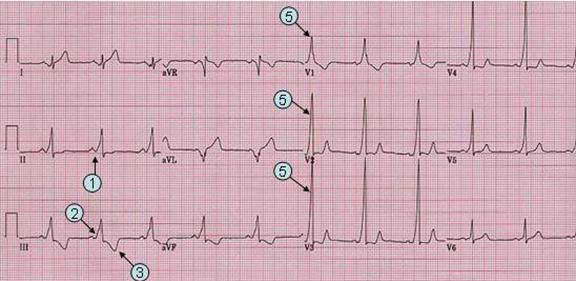 | |
| WPW case 1. (With R/S >1) | |
| Patient. 55 year old male was admitted with clinical picture consistent with unstable angina. He underwent a successful stent placement of the near occluded distal right coronary artery lesion. He has WPW patern on ECG. There has been no documentation of tachyarrhythmia in this patient. There is no relationship between his coronary artery disease and the WPW syndrome. | |
|
II III
|
Characteristic: Other
findings: |
| Go
to WPW page Go to predominant R wave in V1 (R/S ratio >1). Go to axis deviation. | Go
to pseudo (infarction) Q wave. Go to main menu |

